Set Out Running, Now We’ll Take Our Time
After hiking back up to Kearsarge Pass from our day in Bishop, we only managed to hike 1.5 PCT miles to set us up for Glen Pass the following morning. All six of the passes we would be crossing in the 115-mile stretch to Mammoth would definitely have snow on both sides. We knew that this would mean leaving camp at 3 or 4 a.m. in order to hike through the snow-covered areas before the sun began softening it up. Once the snow was sun-baked, ankle-deep to waist-deep postholing would inevitable.
Thankfully, Glen Pass was only 1.3 miles from our campsite, so we didn’t have a 4 a.m. departure this time. While the trail up to Glen wasn’t the most difficult, we had a heavy 6.5 days of food in our packs. It took us two hours to hike 2.3 miles up and over the pass. To compare this to our normal hiking pace, we usually average three miles per hour. I guess this was the new norm for the Sierra?
Despite the slow climb, the view at the top of the pass was incredible. We had a spectacular view of the Rae Lakes and the valley below. First, though, we had to get down the treacherous-looking slope across the snow. We put on our Microspikes and slowly made our way across and down on the frozen footprints already set in the snow. In these conditions, you’re often route-finding and sometimes not hiking directly on the PCT. This was one of those situations, so we followed the footprints as long as we could before carefully climbing down rocks and boulders to the stream below.
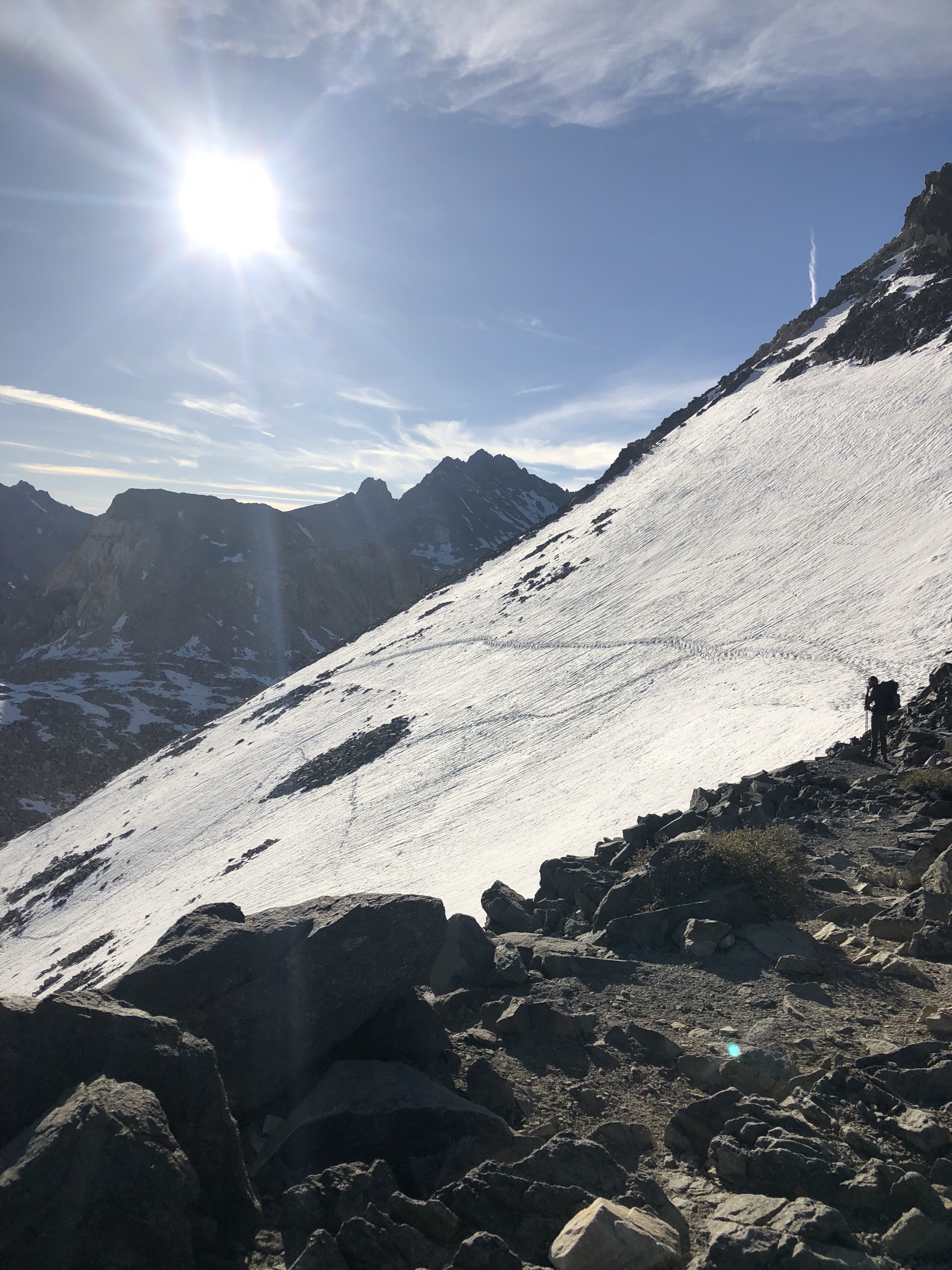


While not the most enjoyable descent, the amazingly clear blue lakes we were hiking toward made it a bit easier. Once we had a closer look at the lakes, we could see several golden trout below the surface. If it was hot, I would have totally gone swimming. Never I have seen such clear lake water before.
800 Miles Down. A Lot of Miles to Go.
After crossing a well-built, yet wobbly suspension bridge across the raging Woods Creek, we hit the 800-mile mark! We are also about 30 percent complete with the trail. The last 100 miles took us 11 days, when we normally average six to seven days to hike 100 miles.
My left knee was really beginning to hurt from the heavier weight of my pack. It had begun hurting a little bit after Kennedy Meadows, but the pain seemed to worsen the more weight I had in my pack. I don’t know how much my pack weighed after leaving Bishop, but I would say it was in the low 30s at least. The positive to hiking in the Sierra is that there is plentiful water, so we only have to carry a liter or so at a time.



We forded and rock-hopped at least six streams today, the deepest being the Rae Lakes outlet at knee-deep level. So far, all of the fording has been very manageable.
Two Passes. One Day.
The night before our second day after Bishop, we made the decision to tackle two passes in one day. We knew this meant that we would more than likely be postholing down Mather Pass, but we went for it anyway. You have to get the experience of it, right?
We left camp at 4:30 a.m. while it was still dark. It was silent as we were the lone climbers up Pinchot Pass. With the snow still frozen, it was an easy up and down for us. As we reached the end of the snow on the north side, we had to shimmy through an area with snow that was waist-high on either side!
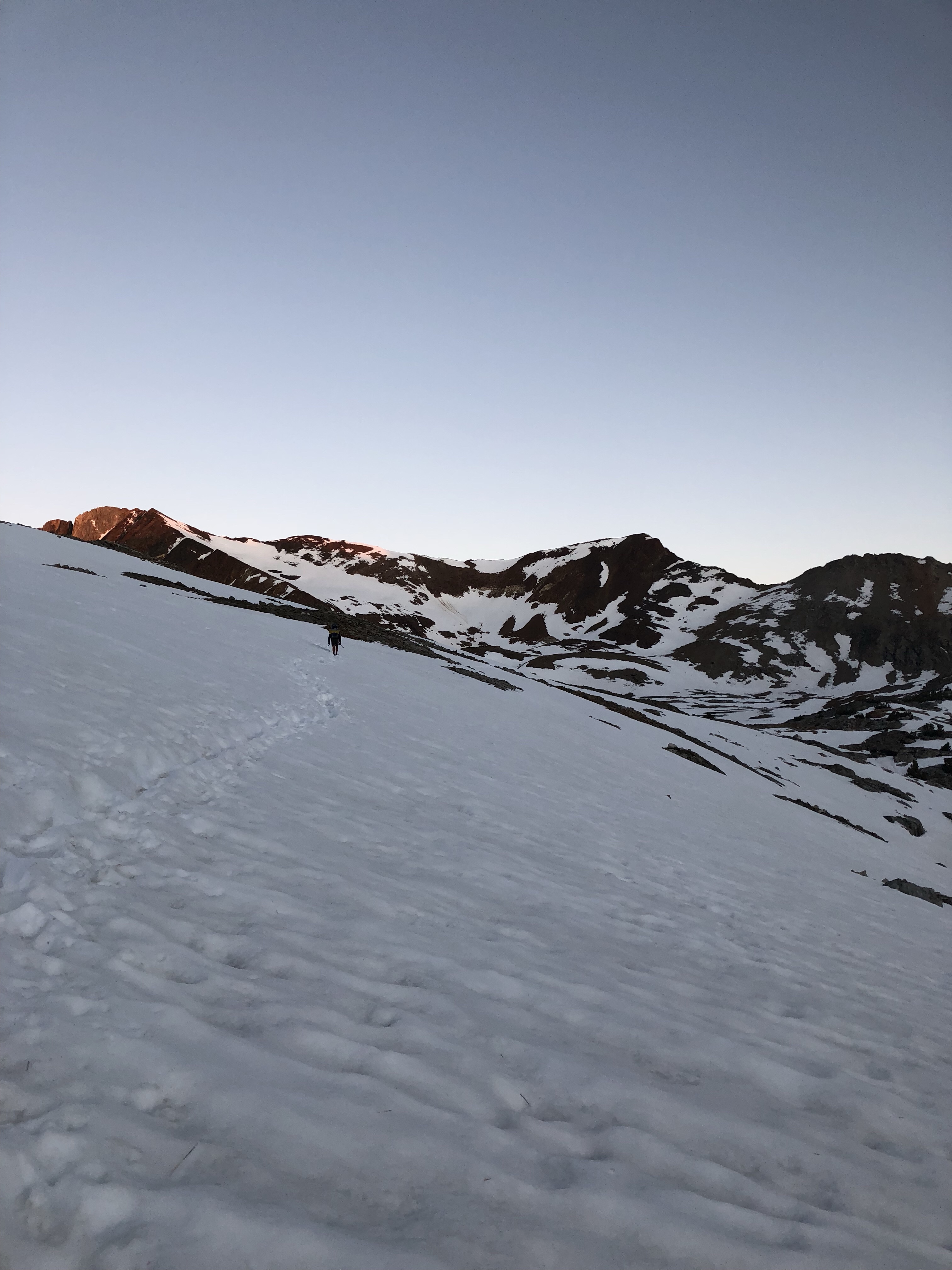
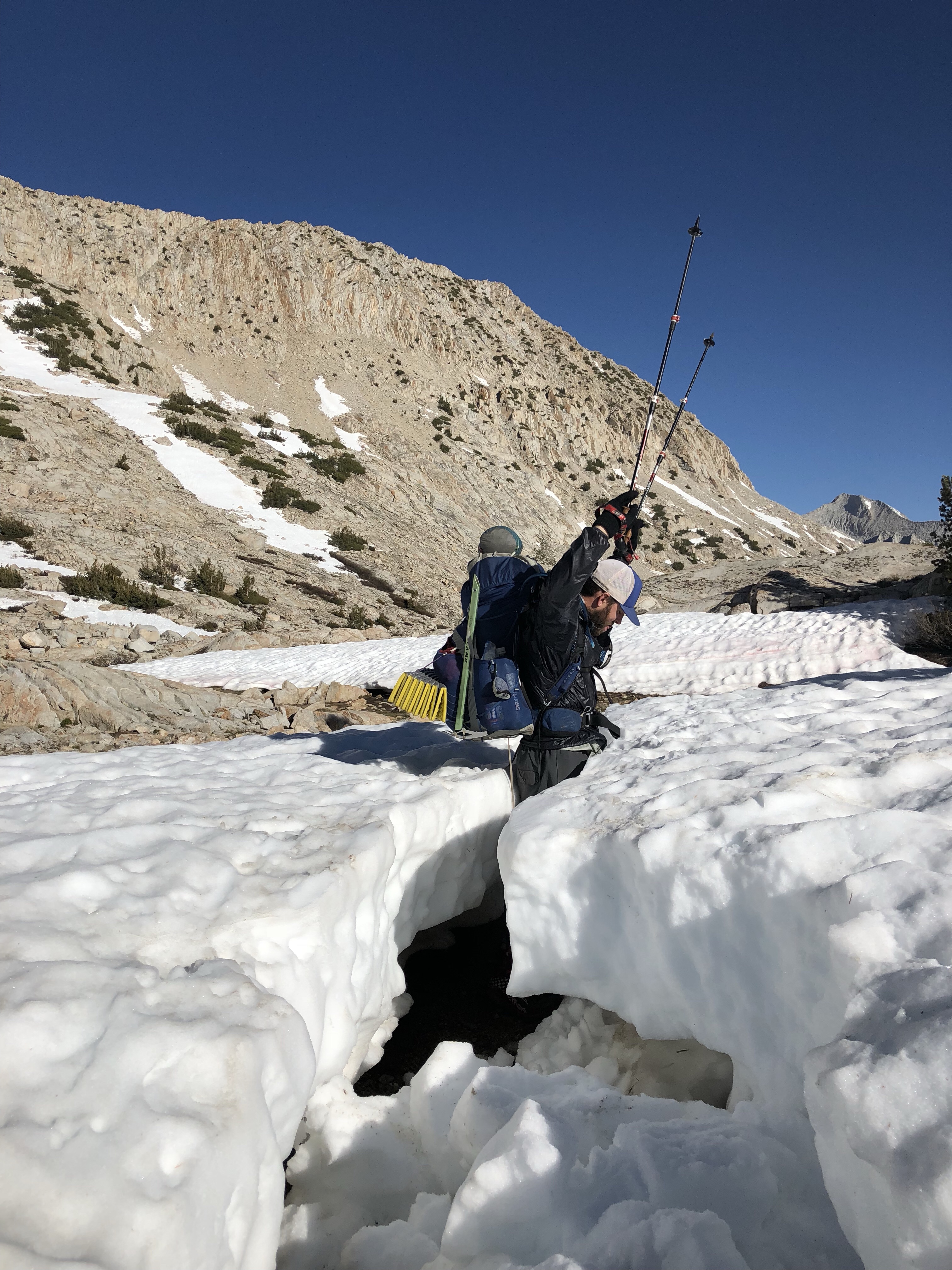
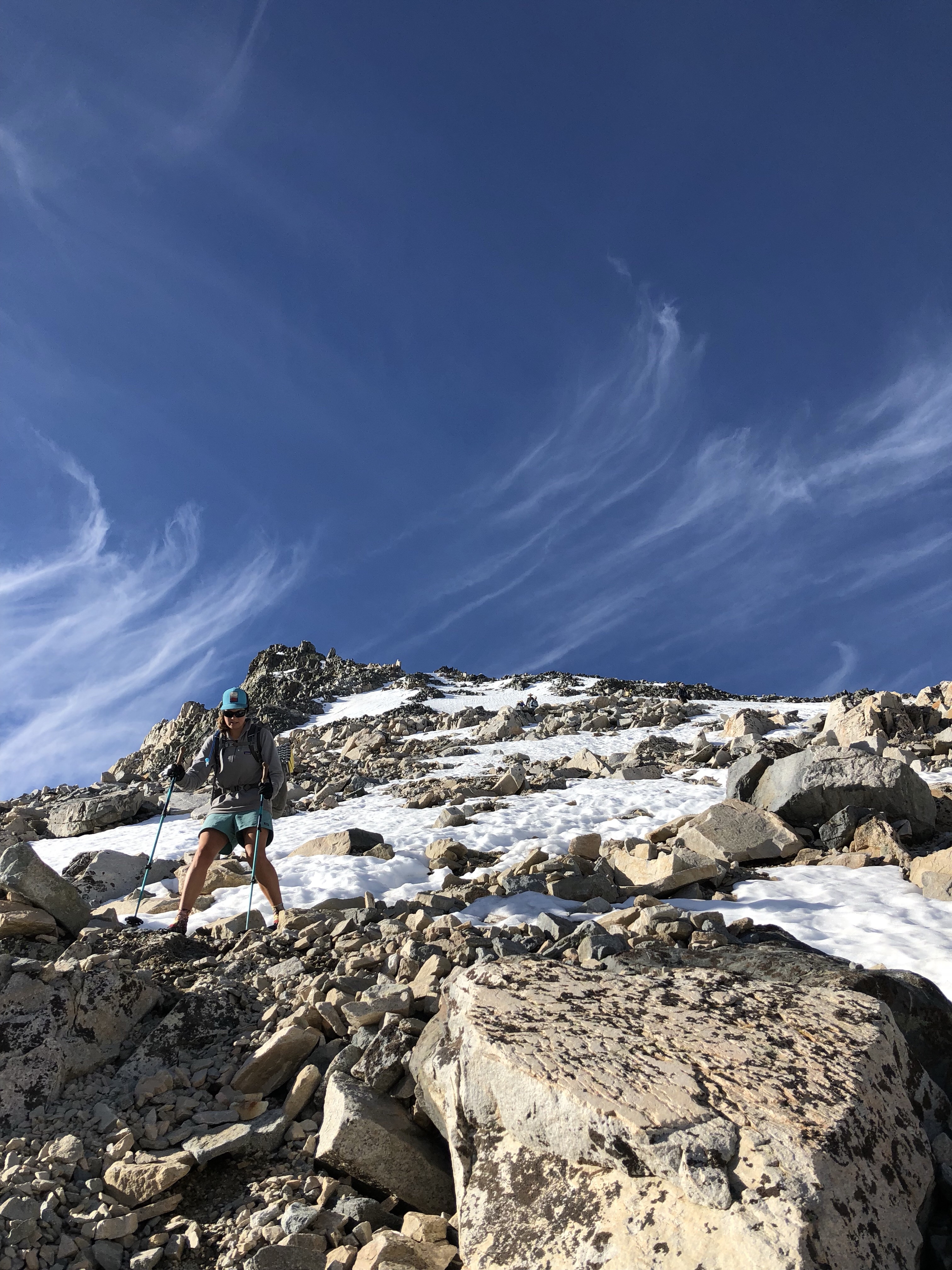
As we continued to hike down to the valley, we reached the South Fork of the Kings River. It was raging at the trail crossing and we really couldn’t tell how deep the water was from the bank. We decided to scout up and down the river to find a safer crossing. Miles went upstream and I walked downstream and we agreed to meet back on the trail. It didn’t take me more than a minute to find a safer and calmer crossing downstream. When I showed Miles the route I proposed, he agreed and we crossed together, packs unclipped at the waist and chest for safety. The current was still very swift in the middle, but with Miles cutting the current a bit in front of me and ensuring our footing with each step, we made it across safely.


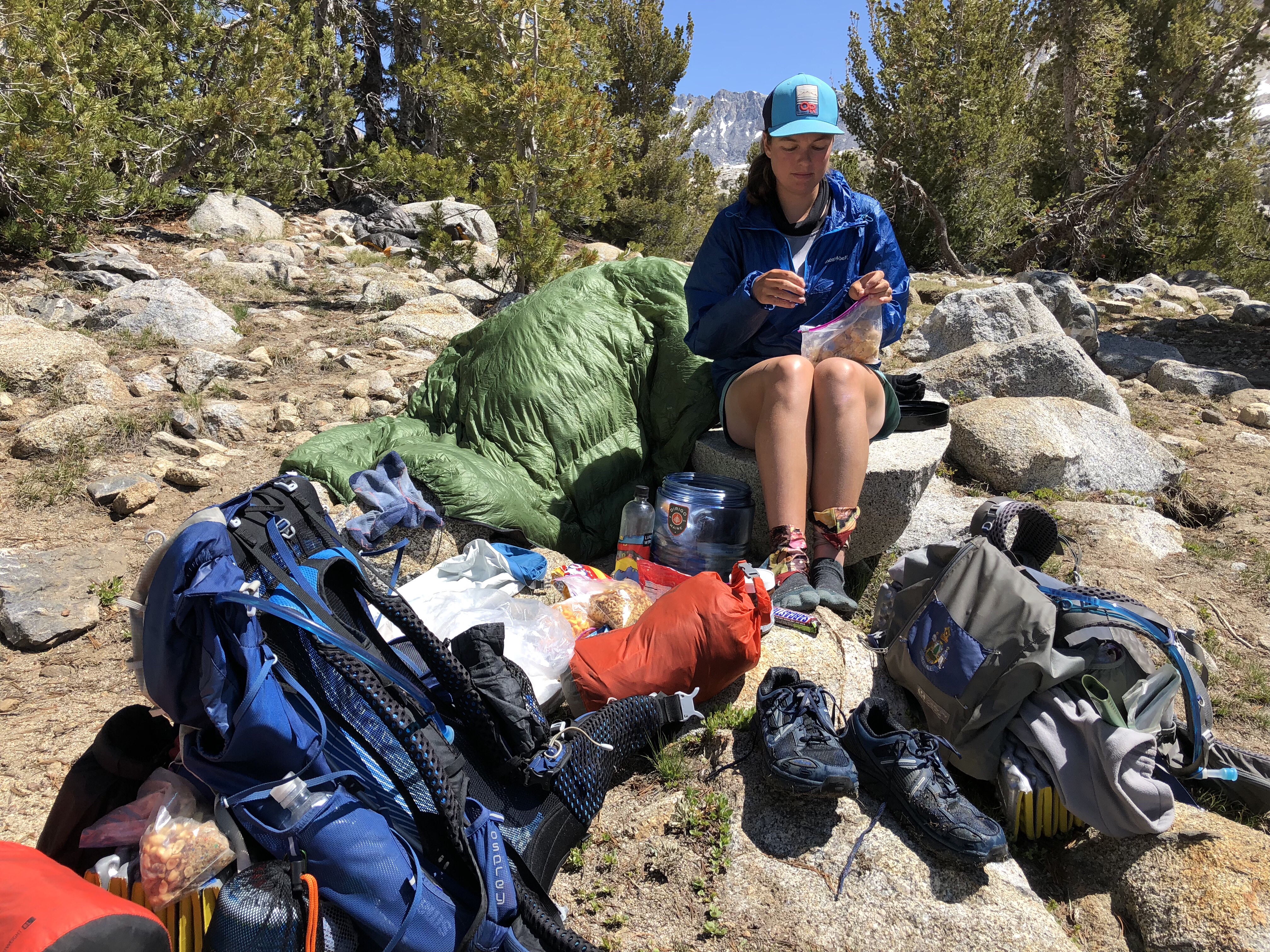
I cringe when I think back to our most difficult crossing on the Appalachian Trail at Cascade Brook. We had no idea what the hell we were doing and crossed directly at the trail in raging water that was higher than our waists! When I reread the paragraph about us crossing, I couldn’t believe how many unsafe things we did that morning while crossing! You live and learn with experience I suppose.
Up Next: Mather Pass
The day’s adventures weren’t over yet. It was almost noon and we were approaching Mather Pass. We hiked up with a few other guys, trying to avoid as much snow as possible on the way up. This meant hiking up the opposite side of the pass than where the trail actually goes. We stayed on the rocks for a while, but eventually had to cut across the snow to reach the switchbacks. There were a couple of times when I slipped a bit on the rocks and my knee was not happy about it. At one point, we were hiking straight up the headwall as we met up with the trail once more. It was a relief making it to the switchbacks, but we still had plenty of snow ahead on the other side.


Miles and I didn’t spend much time at the top of the pass, since we wanted to get through the snow as quickly as possible. We were super excited when we saw a glissade trail not long after coming down the pass. It was our first one! Miles went down first and I soon followed. The butt trail made a turn before heading straight down the mountain and I bumped my hip up against a rock, slowing me to a halt.
Those damn hips.
The first glissade was kind of slow, but we had a second opportunity a few minutes later that was much more fun and fast. We were too lazy to put on our rain pants, so we slid down the mountain in our shorts. It was cold for a few minutes afterward, but we knew it wouldn’t be long before the sun dried out our shorts.

We postholed for a couple of hours and it was super slow-going. Some of the postholes were ankle deep, cutting up our skin and a half-dozen steps for each of us were almost waist deep. It’s like a game of roulette in these conditions, as you never know which step will be a bad one. Once we got through the snow, we enjoyed drying out next to Palisades Creek, sitting in the sun with our fellow thru-hikers.



Did You Know that Marmots Are Rodents?
We camped not far down the trail from the creek and set up our tent in a protected shady spot under the trees. We decided to cook our dinner across the stream in the sunshine, with our tent in sight.
As we were finishing up dinner, we looked over toward our tent and saw a marmot sitting on a rock nearby.
Miles then said, “Did you know that marmots are actually rodents?”
I casually replied, “No, I didn’t know that.”
Not long after, we walked back over to our tent with our food and my pack. Miles was getting something out of his pack that he had left outside the tent when he suddenly realized there were chew marks all over the straps. He didn’t have any food in it and thought nothing of leaving it by our tent since we weren’t too far away. But we quickly realized that the marmot had chewed several of the straps, most likely attracted to the salty sweat in those areas. It had chewed up both shoulder straps where they connect to the base of the pack.
Examining the damage, we weren’t even sure if the straps could hold up for the next 90 miles to Mammoth. Miles duct-taped them that night and I couldn’t help but be nervous that the straps wouldn’t hold. If that was the case, I had no idea how we were going to get his pack and five days worth of food plus all his other gear all the way to Mammoth!
Miles and I always thought that marmots were really cute, but now we had a different outlook on them. Still cute, but capable of extreme destruction.

Backpack Engineers
We left camp the next morning with hope that Miles’s pack shoulder straps would hold up. However, less than a mile into our day, one of the straps broke off completely. Instead of freaking out, though, we both stopped, Miles took his pack off, and we came up with a solution. We attached a bungee cord to the strap and then tied off the shoulder strap to the side of his pack, hoping this would hold for the next four days.
It was a relatively easy day of hiking, and we had no passes to hike over. We hiked down to Kings River, raging at certain points but calm at others. We saw significantly fewer thru-hikers today as well. The passes really dictate many hikers’ schedules out here along with the river and stream levels. We didn’t have to ford at all today, which seems like a miracle. No fords mean dry feet all day.
We camped on a small rocky peninsula surrounded by an alpine lake and Kings River. The tent spots here were very limited. So much so that several hikers attempted to stop after we had set up and had to move on, postholing up to their knees and waists through the slushy, late-afternoon snow. It was to be an early night in our tent since we planned to wake up at 3 a.m. to get up and over Muir Pass.

Up to Muir Pass
We did in fact get up at 3 a.m. so that we could do the eight miles of snow on both sides of the pass. We left at 4:10 a.m., still dark out and having to route find some of the way up. However, it was such a beautiful morning with the moon slowly rising over one of the mountains nearby. The sky was dotted with the most stars I had ever seen in my life and I could easily see the Milky Way stretch across the entire sky.
We were rewarded for our early start as we were able to hike over frozen snow for the majority of the morning. I did fall into the snow once ,however, and half my leg jammed into the snow. I was frustrated because I couldn’t get my leg out, so I stupidly banged my wrist down on the snow thinking it would break. Nope. The snow was obviously frozen on the top layer, so I hurt my wrist in the process. The good news is that it only hurt for a day and recovered quickly thereafter.
Still hiking in the dark, we came to a creek with enough protruding rocks to rock-hop across. Miles went first and almost slipped and fell into the creek since the rocks were iced over. I was very hesitant after witnessing Miles almost fall into the icy, fast-moving water. Not wanting to get my feet wet so early, I began to make my way slowly across the rocks. About three-quarters of the way across, I came to a gap between the rocks that I could not imagine myself being able to jump. The distance was too great.
These are the moments that I’m grateful to have a hiking partner. Miles then took a dry rock from the trail and threw it in near where I was so I had an extra dry step to make my way across. With newly gained confidence,I was able to get across the creek without getting a sole wet.
We arrived at the top of Muir Pass just as the sun was rising over the mountains behind us. It was incredible and by far my favorite pass yet. We took a break inside the surprisingly warm Muir Hut, a circular stone building constructed by members of the Sierra Club in 1928. As an architect’s daughter, I admired the hard work put into the structure.




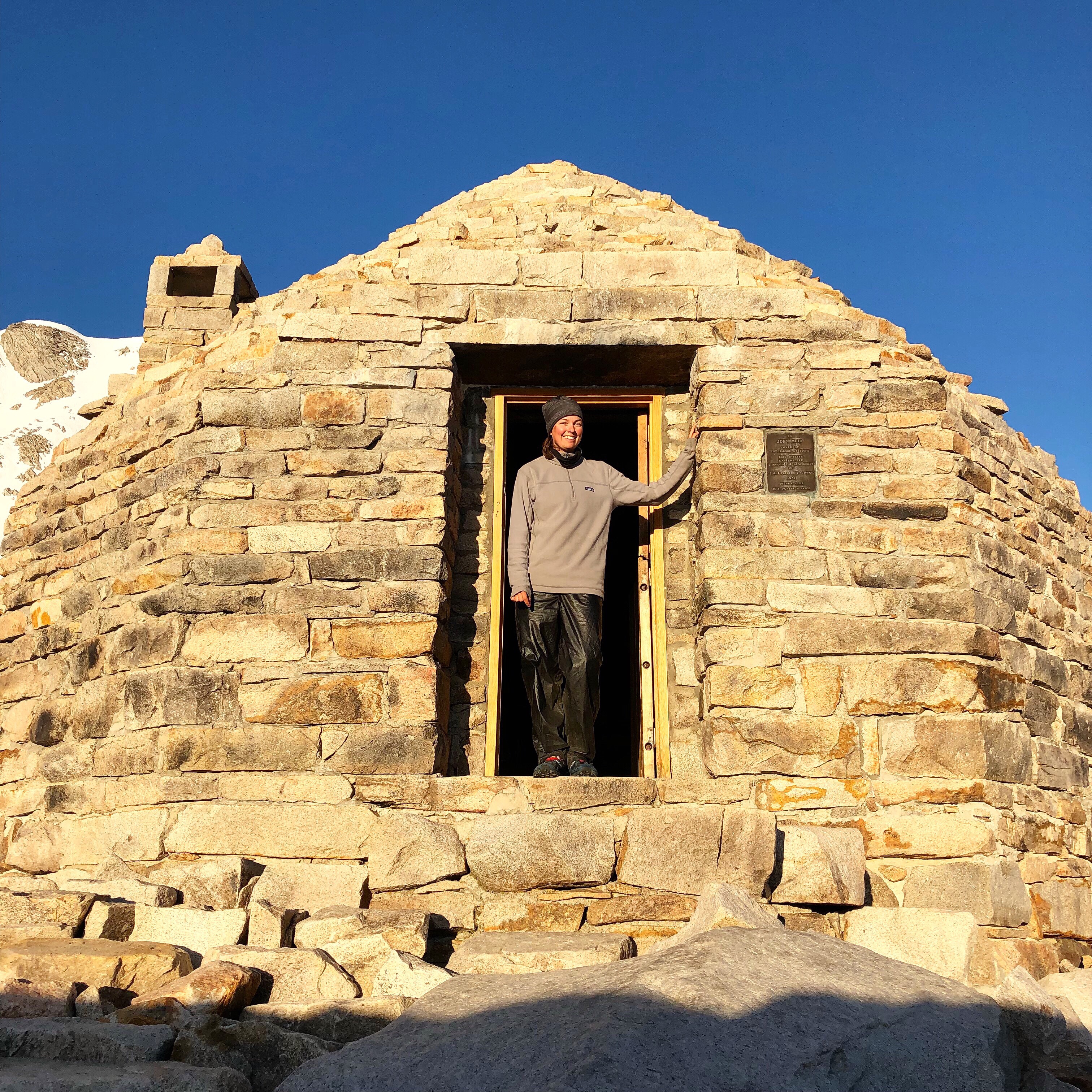
Into Evolution Valley
For most of the way down, the snow was still frozen and easy to walk on. As the sun hit the snow a few miles down, the hiking did get a bit dicier and slick, but we managed just fine. There were about eight miles of snow total, our snowiest pass yet.
We were now in Evolution Valley, by far one of the most beautiful valleys we had hiked through yet. All of the lakes, Evolution Creek, the San Joaquin River, and the cascades of water flow down the mountainsides. I found it so interesting to be just one of the few people in such a remote valley. There were no roads and no communication to the outside world. Reveling in the beauty of where we were at that very moment with no distractions was powerful.

Just after we forded the thigh-deep, yet calm alternate crossing of Evolution Creek we decided to push an extra five miles so we could get closer to the top of Selden Pass for the next morning. The last three miles were rough and super-slow going uphill but I’m glad that we decided to do it. We did almost 26 miles through the valley that day. I never thought that we would hike over 20 miles in the Sierra.



Selden Pass
Since Selden was so close to our campsite and we knew there wasn’t a lot of snow there, we got to get up at our usual time of 4:30 a.m. instead of 3 a.m. We were able to get over the pass early enough and before any postholing would be an issue. Selden was by far the easiest past yet with gradual trail on both sides and hardly any snow.

Later in the day, we had to ford Bear Creek. The current was strong but we were able to take it slow and manage just fine together. The snowmelt makes some of the crossings deeper and faster-flowing, but so far we haven’t encountered anything close to what hikers experienced last year.
We decided to skip Vermilion Valley Resort since we had plenty of food left. We would have liked to visit the resort, which you can access by boat across the lake, but we just really had no reason to go.
Unfortunately, my right posterior tibial tendon begin hurting a lot more this afternoon. It’s the most it’s hurt in a while and I imagine it’s from the constant up-and-down we’ve been hiking every day through the Sierra. I hoped two days off in Mammoth would ease the pain.
One More Pass!
Finally, we were one day away from Mammoth and just one pass between us and our two zero days. We camped just before the raging North Fork Mono Creek the night before, not wanting to cross. In the morning, however, the creek was still flowing just as fast. We found a large log downstream so that we didn’t have to ford. Unfortunately, the next stream crossing wasn’t far. After Miles almost slipped into the water, I decided to just walk right through the water.
Silver Pass was also pretty easy with only a mile of snow on the north side. Later in the day, we had lunch at Virginia Lake, reflecting on the six passes that we had hiked in this section. We both felt that they were quite manageable when done early in the morning and we expected it to be harder, to be honest. We used our Microspikes for fewer than ten trail miles and not once pulled out our ice axes. So far, we felt that the Appalachian Trail through Maine and New Hampshire was much more challenging.



Two Zeros
After the hiking from Kennedy Meadows to Mammoth, I am exhausted. Miles and I are so looking forward to a few days off in town. The constant early mornings have been the toughest part for me as I’m not a morning person. But, overall we feel pretty good physically after getting through this tougher section.
It has by far been our favorite week on-trail so far and seven days that I will certainly always remember many, many years from now.





This website contains affiliate links, which means The Trek may receive a percentage of any product or service you purchase using the links in the articles or advertisements. The buyer pays the same price as they would otherwise, and your purchase helps to support The Trek's ongoing goal to serve you quality backpacking advice and information. Thanks for your support!
To learn more, please visit the About This Site page.

